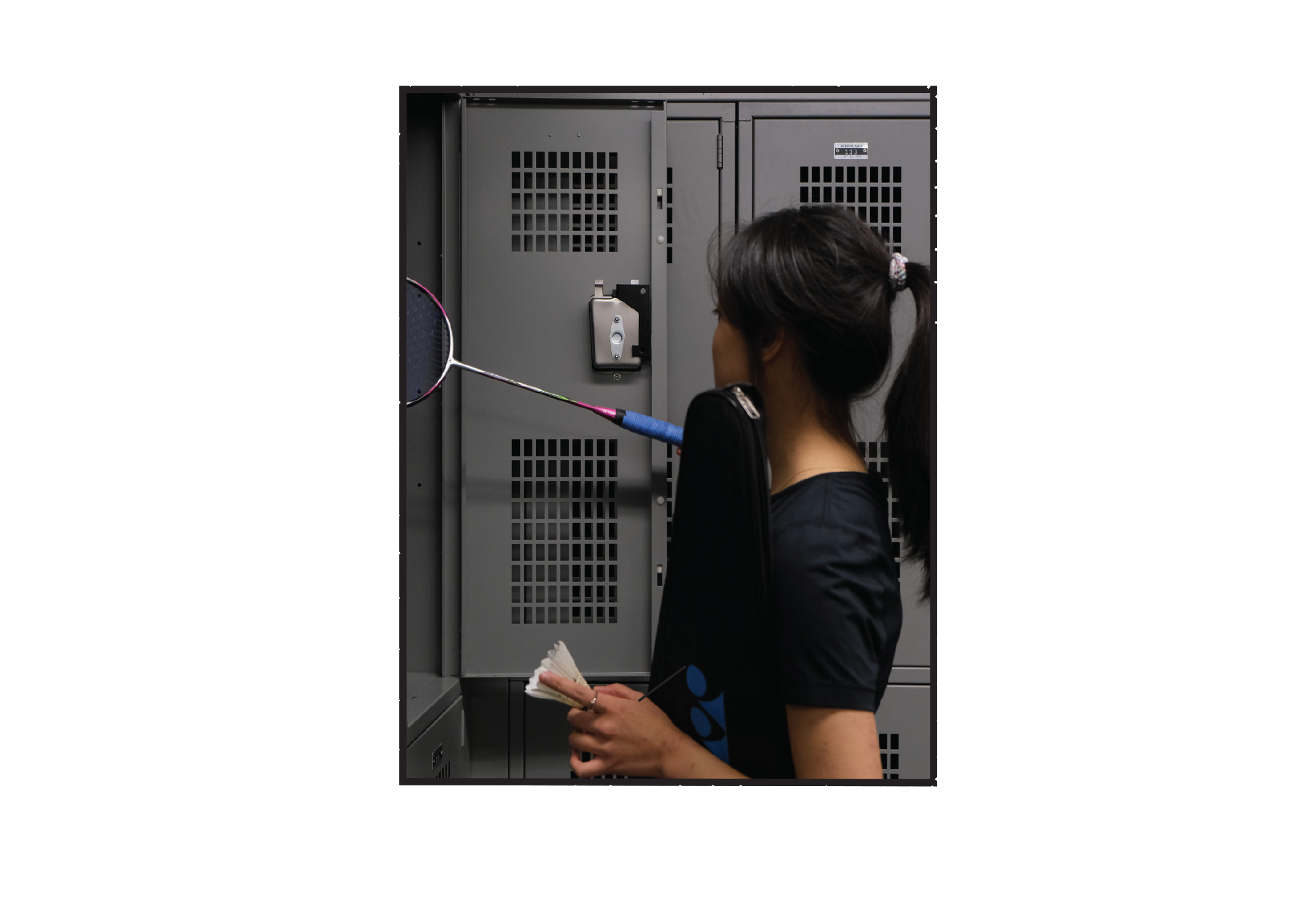Rallying together
Cultivating community across the net.
by George Sun
Three hundred and fifty-one miles per hour. That’s the top speed McCormick second-year Ryan Liu’s shuttlecock could fly at. On the court, he meticulously plans his every step, his squeaky shoes marking the gym floor as he jumps in the air for a smash.
Northwestern’s Badminton Club is thriving. Twice a week, the lineups grow and the courts fill up as dozens of members meet to play at Blomquist Recreation Center. It reflects a broader trend in the badminton community: The sport is growing, and Asians are at the forefront. At the 2024 Badminton World Federation Finals, competitors from Asian teams won four out of the five events.
This year, Liu leads the club. His journey with the sport started in high school after he quit track and field.
“I didn’t feel like [track] was something I wanted to continue,” Liu says. “I needed to pick up a new sport, so I turned to badminton.”
After coming to Northwestern and joining the club his freshman year, Liu says he has become a part of a tight-knit community that is competitive yet fun.
“We all really just love to play,” Liu says. “Everyone’s always smiling.”
The club’s welcoming atmosphere draws everyone from undergraduate students to Ph.D. candidates. It’s not just a place to compete; the club turns into a social hub every night where friendships form. There’s a sense of community between each rally and game.
“Before I start a match, I usually get to know the people that I’m playing with,” Weinberg second-year Tolu Onitilo says.
Members not only join to improve their skills but also to enjoy the social atmosphere. As a result, the club has thrived, growing each quarter as newcomers turn into regulars.
Badminton originated in the mid-1800s, when British military officers stationed in India modified the racket game poona by adding a net. Now, the sport has evolved. Every member of the 2024 U.S. Olympic badminton team was Asian American.
“It’s such an East Asian dominated sport,” Bienen and Weinberg second-year Dhruva Balan says.
However, Southeast and South Asians are making their mark, too.
In many Asian countries, sports — including badminton — are a way out of poverty. In Indonesia, for example, national team members earn about 10 times the average income. Many individuals raised in the rural countryside see sports as a way to lead a better life and financially support their families. As Asians emigrate out of their home countries, their passion for badminton diffuses into their new communities. With more Asians moving to Australia for example, badminton participation numbers have grown from 226,000 in 2020 to 311,000 in 2022.
At Northwestern, badminton is played out of passion and curiosity. For some, picking up the sport came with an element of surprise. Balan started playing badminton through a high school physical education class.
“I discovered that I’m kind of good at it,” Balan says. “And so, that’s kind of how I started.”
For others, it came later. Weinberg fourth-year Trevor Chau began after arriving at Northwestern. Having played tennis for most of his life, he was looking for a form of cardio that he could do year-round. He landed on badminton.
Chau says that, for the most part, skills carry over between the two racket sports. Coming from Wisconsin, where the Asian population is just 3.3%, Chau says he experienced a culture shock after coming to Northwestern.
“We had a decent mix of representation on my tennis team,” Chau says. “In comparison, here there’s a lot more Asians.”
Chau says given the slim Asian representation in his hometown, his school wasn’t able to garner enough interest to start a badminton club. Stories like these are not uncommon.
“I went to high school in Connecticut,” Weinberg fourth-year Neha Navrange says. “There aren’t many Asians who play badminton, so there was no team.”
Instead, Navrange played softball and field hockey in middle school, two sports traditionally dominated by white players. Navrange says it was difficult to gel with people given her limited shared experiences and backgrounds with them.
At Northwestern, the club has seen a growing trend toward diversity, especially with the club exploding in popularity the past few years. Meanwhile, the sport is growing on a global scale. According to the International Olympic Committee, more than 330 million people play badminton worldwide. But some players say it might not become substantially more diverse anytime soon, at least on the recreational scale.
“That’s because the popularity of the sport among Asians influences other Asians to pick up the sport,” Chau says.
But at Northwestern, whether badminton is a newfound passion for students or a way to reconnect with their roots, the club is a thriving community all year round. As the sport grows here and around the world, badminton is more than a game: it’s a method of connection that brings people together.

